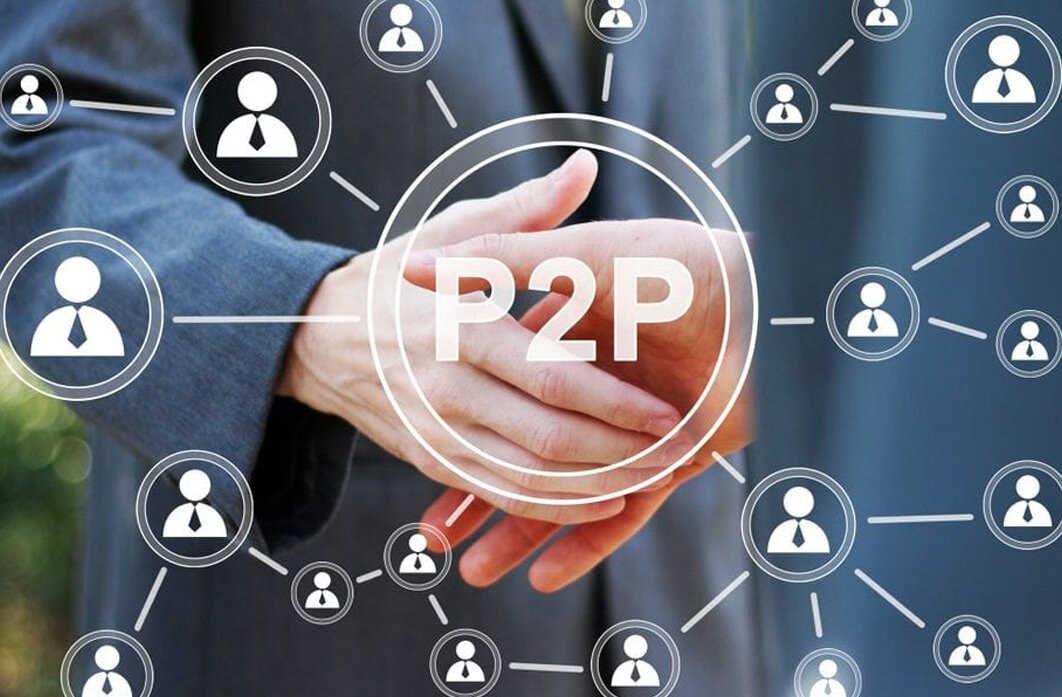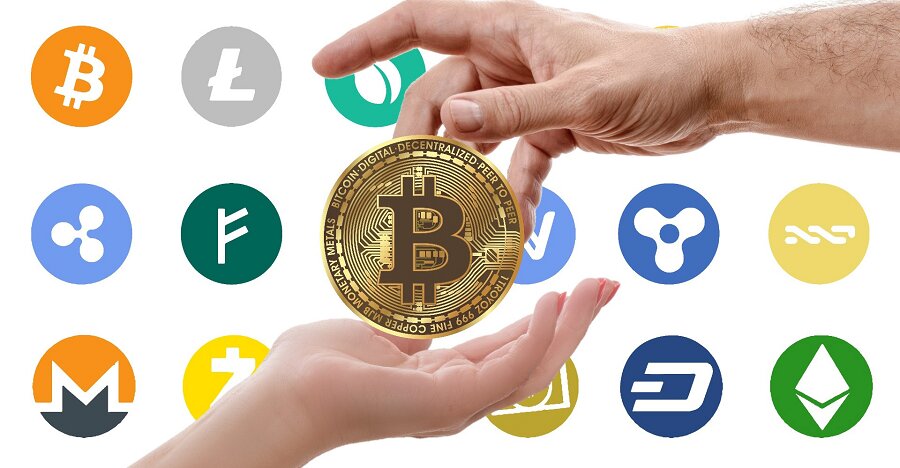The world of finance has witnessed a transformative revolution with the advent of cryptocurrencies. The need for secure and efficient trading methods has become increasingly apparent. Traditional centralized exchanges have long dominated the landscape, serving as intermediaries facilitating buyer and seller transactions. Peer-to-peer (P2P) crypto exchange has emerged as an alternative paradigm, revolutionizing how individuals trade cryptocurrencies.
What is P2P Crypto Exchange?
P2P crypto exchange departs from the traditional model by facilitating direct transactions between buyers and sellers without relying on a central authority. Instead, these exchanges harness the power of decentralized technologies, with blockchain being at the forefront, to ensure transparency, security, and trustworthiness. The decentralized nature of P2P exchanges enables users to retain control over their assets throughout the entire trading process, marking a significant shift in the crypto market dynamics.
Unlike centralized exchanges, where users must entrust their funds to a third party, P2P exchanges empower individuals by enabling them to transact directly with each other. This fundamental shift puts users in charge of their assets and eliminates the need to navigate the complexities and potential vulnerabilities associated with centralized intermediaries. By leveraging blockchain technology, P2P exchanges introduce transparency, immutability, and decentralization, fostering trust and revolutionizing how individuals engage in digital asset trading.
Decentralization and Blockchain Technology: The Foundation of P2P Crypto Exchange
At the heart of P2P crypto exchange lies the fundamental principle of decentralization. In a decentralized system, transactions occur directly between buyers and sellers, removing the need for intermediaries or central authorities. This model empowers individuals by granting them complete control over their assets throughout trading.
Blockchain technology is commonly employed to achieve decentralization and establish trust within P2P exchanges. Blockchain is a distributed ledger that preserves a transparent and immutable record of transactions across a computer network, often called nodes. Each node in the network bears a copy of the blockchain, ensuring that no single entity has sole control over the system.
One of the key features of blockchain is its ability to enhance transparency. Every transaction conducted on a P2P exchange is recorded as a block and added to the blockchain sequentially and chronologically. This ensures a transparent and publicly accessible record of all transactions, enabling participants to verify and validate the integrity of the exchange.
The immutability of blockchain is another crucial aspect that contributes to the reliability and security of P2P exchanges. Once a transaction is recorded on the blockchain, it becomes virtually impossible to alter or delete it retroactively. This is achieved through cryptographic algorithms and consensus mechanisms that ensure the consensus of all network participants on the validity of each transaction.
Consensus algorithms, such as Proof of Stake and Proof of Work, are employed in blockchain networks to validate and agree on the ledger's state. In PoW, participants compete to solve complex mathematical puzzles, with the winner being granted the authority to add the following block to the blockchain. PoS, on the other hand, assigns the right to create the next block based on the stake or ownership of the cryptocurrency held by the participants.
The decentralized nature of blockchain technology brings added security to P2P exchanges. Traditional centralized exchanges are attractive targets for hackers due to their centralized storage of user funds. In contrast, P2P exchanges eliminate the single point of failure by distributing user funds across multiple wallets. Users retain control over their private keys, which are necessary to access and transfer their assets. This dramatically reduces the risk of unauthorized access and theft.
Blockchain technology facilitates smart contracts. They are self-executing agreements with the terms and conditions directly written into the code. They automatically execute and enforce the agreed-upon conditions. P2P exchanges can utilize smart contracts to automate various aspects of trading, such as order matching, settlement, and dispute resolution.
While decentralization and blockchain technology offer numerous advantages to P2P crypto exchanges, they are not without challenges. Scalability is a significant issue as blockchain networks, particularly those with high transaction volumes, may face congestion and slower transaction processing times. Efforts are being made to develop solutions such as layer-two protocols and sharding to address these scalability challenges.
Interoperability is another area of focus for blockchain technology. As multiple blockchains have different protocols and standards, ensuring seamless communication and compatibility between different blockchain networks can be complex. Initiatives like cross-chain bridges and interoperability protocols aim to bridge the gap and enable the transfer of assets between different blockchain ecosystems.

Critical Components of P2P Crypto Exchange
P2P crypto exchange revolutionizes how individuals trade digital assets by enabling direct transactions between buyers and sellers without intermediaries. These exchanges utilize various vital components to ensure trust, security, and efficiency throughout the trading process. Let's delve into the key components that make P2P crypto exchange function seamlessly.
Order Matching:
Order matching is a critical component of P2P exchanges. Advanced algorithms match buy and sell orders based on predetermined price, volume, and location criteria. These algorithms ensure fair trade and efficient execution by identifying suitable counterparts for each transaction. By automating the order matching process, P2P exchanges improve the speed and accuracy of trade execution, providing users with a seamless trading experience.
The order-matching algorithms in P2P exchanges operate in real-time, continuously scanning and matching the available orders based on the specified criteria. The goal is to find the best match that satisfies the buyer and seller, ensuring the transaction occurs at a mutually agreed-upon price and quantity. This process eliminates the need for manual intervention, decreasing the risk of errors or delays in traditional centralized exchanges.
Escrow Services:
Escrow services are essential in mitigating the risk of fraudulent activities in P2P crypto exchange. When a trade is initiated, the exchange acts as a trusted third party and holds the assets in escrow until both parties involved in the transaction confirm the completion of the trade. This mechanism provides security and trust, ensuring both parties can only walk away with fulfilling their obligations.
Escrow services help to establish confidence between buyers and sellers, mainly when dealing with unfamiliar counterparties. By holding the assets in escrow, the exchange ensures that the seller delivers the agreed-upon assets and the buyer provides the necessary payment. Only when both parties confirm the completion of the trade are the assets released from escrow and transferred to the buyer's wallet.
The escrow mechanism in P2P exchanges safeguards against potential scams or dishonest behavior. It helps to prevent instances where one party fails to deliver the assets or make the payment, providing a secure environment for participants to engage in transactions. This feature significantly enhances trust and reduces the risk of trading on P2P platforms.
Reputation Systems:
Reputation systems are instrumental in evaluating the trustworthiness of users on P2P crypto exchanges. These systems allow participants to rate and provide feedback on their trading experiences with other users. By considering a user's reputation score, potential counterparties can make informed decisions about whom to trade with, minimizing the risk of engaging in fraudulent or unreliable transactions.
Reputation systems operate based on the principle that past behavior is a good indicator of future behavior. Users can rate their counterparts after completing a trade, leaving feedback and comments regarding the experience. These ratings and comments contribute to the reputation score of each user, which is often displayed alongside their offers or profiles.
Participants in P2P exchanges can assess a potential counterparty's reputation score before engaging in a trade, allowing them to make more informed decisions. A high reputation score indicates a history of successful and trustworthy transactions, while a low score may raise red flags. Reputation systems promote accountability and transparency within the P2P trading ecosystem, fostering a safer and more reliable user environment.
The implementation of reputation systems incentivizes users to maintain a good reputation by conducting themselves honestly and ethically. Conversely, it discourages fraudulent behavior, as users with a negative reputation are less likely to find willing counterparties for their trades. By encouraging responsible behavior and facilitating trust-building among participants, reputation systems contribute to the overall integrity and reliability of P2P exchanges.
The Advantages of P2P Crypto Exchange
Peer-to-peer (P2P) crypto exchanges offer numerous advantages over traditional centralized exchanges, making them increasingly popular among cryptocurrency enthusiasts. These advantages enhance the user experience and promote a more inclusive and decentralized financial ecosystem. Let's explore the advantages of P2P crypto exchange in greater detail.
A. Enhanced Privacy:
Privacy is a significant concern for individuals engaging in financial transactions. P2P exchanges prioritize user privacy by eliminating the need to disclose personal information to a central authority. Unlike centralized exchanges that often require users to provide extensive KYC (Know Your Customer) information, P2P exchanges facilitate direct transactions between buyers and sellers without intermediaries. This allows users to control their sensitive data, reducing the risk of identity theft or unauthorized use of personal information.
B. Lower Fees:
Transaction fees associated with cryptocurrency trading can be a significant factor for users. P2P exchanges generally offer lower fees compared to centralized exchanges. Since no intermediaries are involved in the trading process, users can avoid additional costs associated with third-party services. Instead, P2P exchanges typically charge minimal fees for facilitating transactions, making them more cost-effective for traders. Lower fees enable users to retain a more significant portion of their profits and increase the overall efficiency of their trading activities.
C. Global Accessibility:
One of the standout advantages of P2P exchanges is their ability to transcend geographical barriers. Traditional financial systems often limit and restrict individuals in specific regions or countries. P2P exchanges, however, enable users from around the world to trade directly with one another without facing arbitrary limitations imposed by centralized authorities. This global accessibility opens up opportunities for individuals with limited access to traditional financial services, enabling them to participate in the digital economy and harness the benefits of cryptocurrency trading.
D. Increased Security:
Security is a critical aspect of cryptocurrency trading. P2P exchanges enhance security by reducing the risk of hacking and security breaches. In centralized exchanges, user funds are often stored in a central repository, making them attractive targets for hackers. P2P exchanges, on the other hand, eliminate the central point of failure by allowing users to retain control over their private keys and funds. This means that each user is responsible for the security of their assets, reducing the likelihood of unauthorized access or theft. By decentralizing control, P2P exchanges provide users with higher security and peace of mind.
Furthermore, P2P exchanges leverage blockchain technology to ensure the integrity and transparency of transactions. Transactions on the blockchain are recorded in a tamper-resistant manner, making it extremely difficult for malicious actors to alter transaction records. This enhances the overall security and trustworthiness of P2P exchanges.
The advantages of P2P crypto exchange extend beyond the individual user. By fostering a decentralized trading environment, these exchanges contribute to the broader goal of creating a more inclusive financial ecosystem. They give individuals greater control over their finances, empower those underserved by traditional financial systems, and facilitate cross-border transactions without intermediaries.
Potential Risks and Challenges in P2P Crypto Exchange
While peer-to-peer (P2P) crypto exchanges offer numerous advantages, they are not without their risks and challenges. Users must be aware of these factors and exercise caution when engaging in P2P trading. Let's explore some potential risks and challenges associated with P2P crypto exchange.
A. Counterparty Risk:
One of the primary risks in P2P trading is the potential for dealing with untrustworthy counterparties. Although reputation systems play a crucial role in evaluating the trustworthiness of users, there is still a possibility of encountering malicious actors. Users must exercise due diligence and conduct thorough research before entering into transactions. Users should carefully assess the reputation and feedback of potential counterparties and consider using trusted escrow services to mitigate the risk of fraudulent activities. Additionally, starting with smaller trades and gradually building trust with counterparties over time is advisable.
B. Regulatory Concerns:
The decentralized nature of P2P exchanges presents regulatory challenges in various jurisdictions. Cryptocurrency regulations are still evolving, and different countries have different stances on the legality and regulatory requirements associated with P2P trading. Users must know their respective regions' legal implications and requirements to ensure compliance with local regulations. Failure to comply with regulatory frameworks could result in legal consequences, financial penalties, or restrictions on trading activities.
C. Limited Liquidity:
P2P exchanges may face liquidity challenges, especially those catering to less popular or illiquid cryptocurrencies. Unlike centralized exchanges that pool liquidity from a wide range of participants, P2P exchanges rely on the availability of willing buyers and sellers within their user base. The absence of centralized order books can sometimes result in limited trading options and potentially affect the speed and efficiency of transactions. Users may need help finding suitable counterparties or may have to adjust their pricing expectations to match the prevailing market conditions. It is crucial to consider the liquidity of the chosen P2P exchange and the specific cryptocurrencies being traded to ensure a smooth trading experience.
D. Security Risks:
While P2P exchanges emphasize user control and security, remaining vigilant about potential security risks is crucial. Users are in charge of safeguarding their private keys and wallets, as any compromise can lead to the loss of funds. Phishing attempts, malware, and social engineering attacks targeting individual users remain potential risks. Applying robust security measures such as two-factor authentication, hardware wallets, and regular software updates is advisable to protect against potential security breaches. Our wallet protects users' private keys with Secure Enclave, Biometrics, and 2-Factor Authentication, while also storing users' assets on offline storage. This combination of security measures provides necessary safeguards against theft or loss. Additionally, users should exercise caution when sharing personal information and be wary of engaging in transactions with unfamiliar or suspicious counterparties.
E. Technical Challenges:
P2P exchanges rely on technological infrastructure, and like any online platform, they may encounter technical challenges such as system downtime, connectivity issues, or delays in order processing. These challenges can temporarily disrupt trading activities and impact user experience. It is essential to choose reputable and reliable P2P exchanges with a track record of stable operations and responsive customer support to mitigate the impact of potential technical issues.
Conclusion
P2P crypto exchange has revolutionized how individuals trade digital assets, offering greater control, privacy, and reduced costs compared to centralized exchanges. These exchanges provide a secure and efficient platform for direct peer-to-peer transactions by leveraging blockchain technology. While P2P trading brings numerous benefits, at PlasBit, we remind users to consider the risks and challenges associated with decentralized trading. As the cryptocurrency landscape continues to evolve, P2P exchanges will likely play an increasingly significant role in the growth of digital asset trading.







